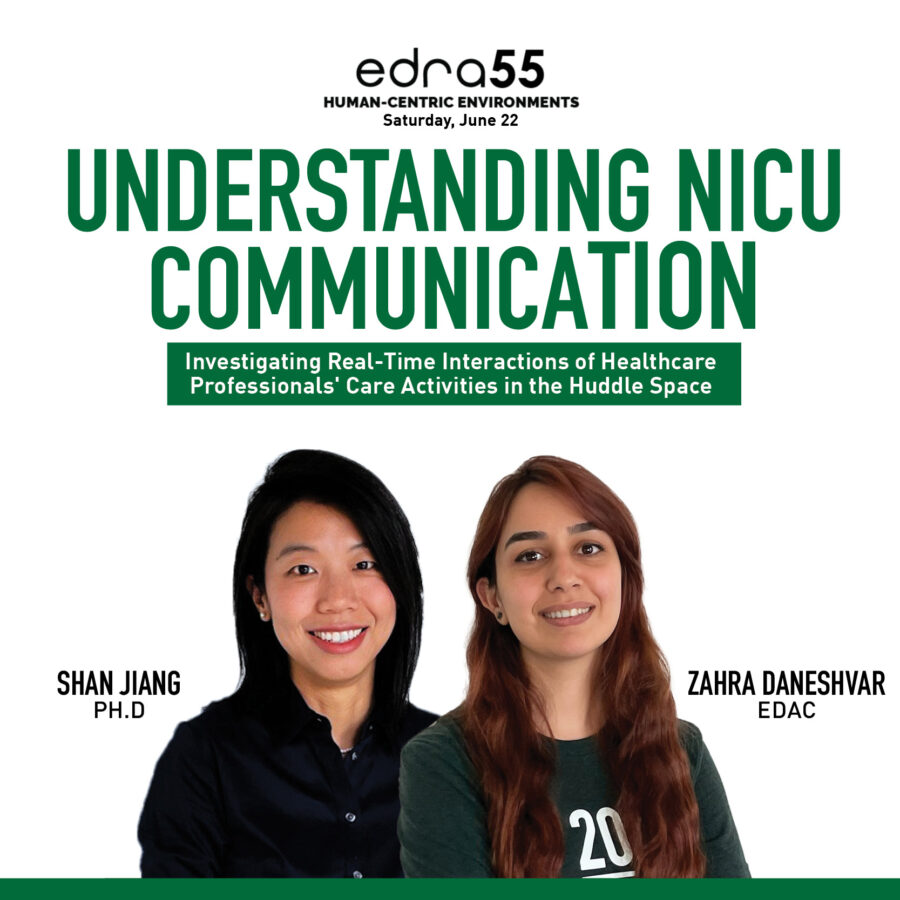Insights
Aug 1, 2024 _ insights
Understanding NICU Communication: Real-Time Interactions in Huddle Spaces
Neonatal Intensive Care Units (NICUs) are complex clinical environments where interprofessional communication is vital to patient recovery. Studies have shown that effective communication and quality care relies on establishing social networks that can facilitate cross-disciplinary care (Fay et al., 2022; Trzpuc & Martin, 2010).
Unfortunately, few studies have been done to observe real-time communication within NICUs to better understand the relationships among staff, what they communicate, and where that communication occurs. That’s why we designed a study to do just that.
To better understand how the organization, connectivity, and visual integration of a newly renovated NICU at UK HealthCare affects the communication of those who work there, we shadowed a group of 60 healthcare professionals (nurses, physicians, respiratory therapists, and technicians). We recently presented our findings at the Environmental Design Research Association’s (EDRA) annual conference. Here are some takeaways:
- Method: As the NICU at UK HealthCare transitioned from an 8,000 SF open-bay model of care to a 36,000 SF unit, which was organized around several centrally located, interdisciplinary huddle stations. We used Space Syntax Analysis (a study how spatial layouts influence human behavior, movement, and social interaction) of the pre- and post-renovation designs to compare connectivity and visual integration of the space. We then used that data to analyze onsite observation of 60 healthcare professionals.
- Differentiation: Communication patterns were highly differentiated by role. Our observations showed that therapists spent the most time in huddle stations, followed by technicians, while nurses spent the least.
- Informal Communication: A key takeaway is that informal communication plays an important role in fostering professional relationships and well-being among staff, so designs that facilitate that communication boost teamwork, support, and mutual awareness.
For more about our study, see our EDRA presentation here.
Learn more about Shan or Zahra.
Acknowledgements:
The design of UK HealthCare’s Kentucky Children’s Hospital Neonatal Intensive Care Unit was a collaborative effort between HGA and GBBN. The research and data collection were facilitated by Shannon Haynes, Patient Care Manager at UK HealthCare.
The full research team includes:
- Lindsey Fay, Associate Professor, Associate Dean for Research and Director of Graduate Studies at UK College of Design
- Sarah Julien-Bell, Director of Institutional Effectiveness at Mount Carmel College of Nursing, University of Illinois Urbana-Champaign
- Shan Jiang, Ph.D, Associate | Director of Research at GBBN
- Zahra Daneshvar, Interior Designer & Researcher at GBBN
- Zahra Hajibabaei, Graduate Research Assistant at School of Interiors, UK College of Design




